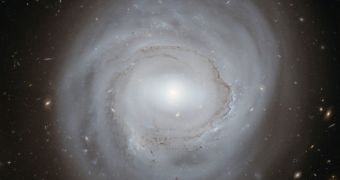An independent panel formed by the National Research Council (NRC) has determined that NASA should contribute up to $20 million to the European Space Agency's (ESA) Euclid mission, but only if the American organization also decides to build the Wide-field Infrared Survey Telescope (WFIRST).
The latter would be a natural continuation of the success registered with the Wide-field Infrared Survey Explorer (WISE), a mission that was only recently discontinued due to exhausted coolant supplies.
The infrared telescope would stand to benefit from additional data provided by the ESA Euclid spacecraft, the NRC Committee on the Assessment of a Plan for U.S. Participation in Euclid said. NASA asked experts to weigh in the pros and cons in a letter submitted last November.
Without a firm commitment towards building WFIRST, there is no point for the American space agency to get involved with financing the European endeavor, the panel made of astrophysicists says.
The main purpose of Euclid will be to answer critically-important questions pertaining to fundamental physics and cosmology. First and foremost, it will dedicate its attention to figuring out how dark energy and dark matter work, and why.
At this point, experts in the international community tend to agree that the two dominate normal, baryonic matter, and that the latter makes up as little as 4 percent of the entire Universe. What Euclid will do is map the large-scale distribution of galaxies.
This will help the spacecraft reveal the underlying ‘dark’ architecture of the Universe, if such a thing really exists. The quest for the two has been on for decades, yet no tangible progress has been made thus far. The work is still very much theoretical.
The NRC panel determined that Euclid data would go a long way towards helping the WFIRST spacecraft achieve its own science goals. In exchange for the near-infrared detectors ESA is asking from NASA, the American space agency would receive a spot on the 12-member Euclid science team.
If NASA decides to go ahead and accept a partnership with ESA for this endeavor, then a formal memorandum of understanding needs to be signed by no later than mid-May, 2012.
NRC experts were keen to point out that Euclid cannot be used as a substitute for WFIRST, Space reports.
The European mission “is not sufficient for achieving the broader decadal survey goals for the WFIRST mission, nor will it seek to accomplish the more ambitious goals for WFIRST’s dark energy measurements,” the panel concludes.

 14 DAY TRIAL //
14 DAY TRIAL //